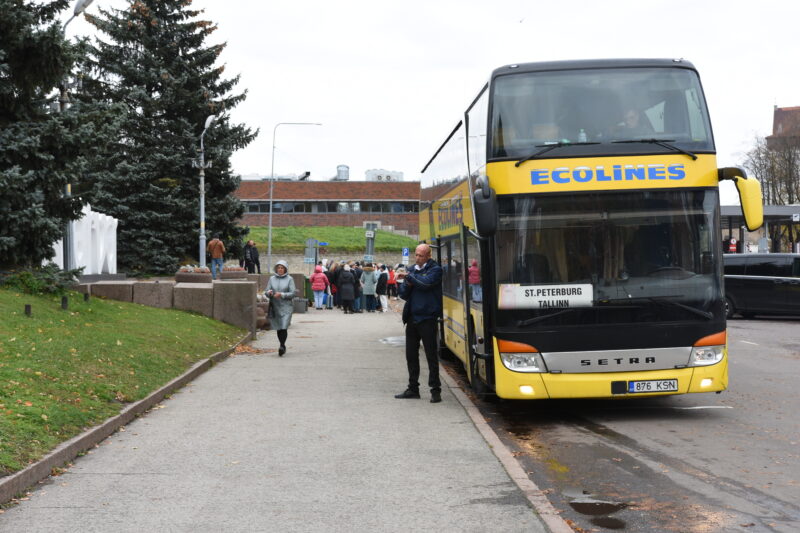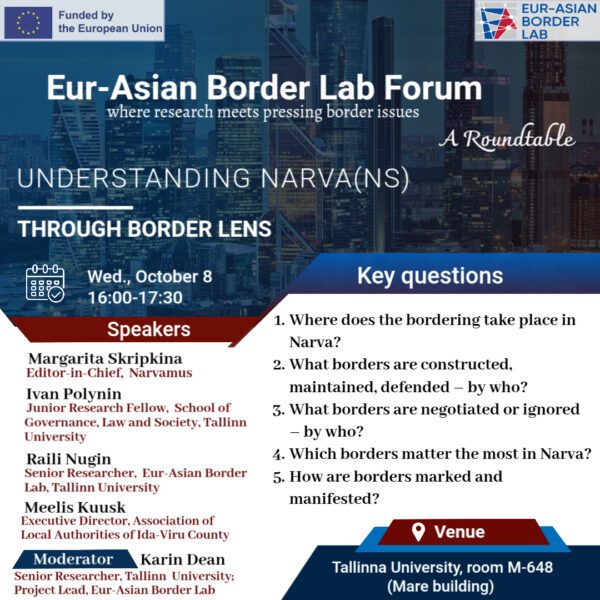
When: October 8, 2025, from 16:00 – 17:30
Where: Tallinn University, Mare building, Senate room (M-648)
Registration: Pre-registration is required. Please register here by 9:00 am on October 6.
“Is Narva next?”, a recurring theme in the international media coverage since Russia’s annexation of Crimea in 2014, has come to annoy both Estonian security/government officials and Narva’s residents alike. While Estonian defence analysts say that the eastern state border is well defended, the city’s mayor Katri Raik notes that the divide is not between Estonians and Russians but between generations. Furthermore, a pressure to fit under the binary constructs of an Estonian- or a Russian identity is not such a straightforward issue in Narva. Finally, the ÕÜF – the Estonian acronym for the Just Transition Fund that many Estonians struggle to pronounce – earmarks Narva together with Ida-Viru County as an impoverished region in need to transition out of fossil fuels, an objective where geopolitical and human insecurities deeply enmesh.
At the heart of these complex issues are different types of bordering. On the one hand, Narva’s position at the EU’s and NATO’s borders with Russia makes it a geopolitically contentious borderland. On the other hand, the Estonian state’s bordering in Narva also takes place on multiple other fronts. This roundtable shows how examining the entanglement of geopolitics, identities and state efforts through bordering helps to expose the policy blind spots and hidden tensions in Narva.
Border studies show that boundaries are not merely politico-physical lines between nation-states – there are also other, less visible lines with symbolic, social, ethnic and religious meanings. Often crossing symbolic boundaries based on group affiliations or language is much more difficult than crossing boundaries between States. The maintenance and management of such boundaries, similarly, is often more strained and much stricter. Research further shows how borderland communities worldwide creatively cope, adapt and negotiate state structures, and develop hybrid identities shaped by constant interaction, negotiation and tension between different cultural and political spaces.
Key questions:
- Where do the borders/lines/ruptures run in Narva (Ida-Virumaa) and why?
- Why are the binary constructs of an Estonian- or a Russian identity neither useful nor straightforward (in Narva)?
- Which borders matter the most in Narva? Who constructs, maintains these?
- Do we need borders?
Roundtable speakers:
- Margarita Skripkina, editor-in-chief of Narvamus and MA student at Tallinn University, from Narva
- Ivan Polynin, junior research fellow at Tallinn University, School of Governance, Law and Society, researching Russian speaking youth and integration in Estonia
- Raili Nugin, senior research fellow at Tallinn University, School of Humanities and Eur-Asian Border Lab, researching social exclusion and mobilities of youth with varied socio-cultural backgrounds
- Meelis Kuusk, executive director, Association of Local Authorities of Ida-Viru County
Moderator: Karin Dean, senior researcher at Tallinn University and project lead of the Eur-Asian Border Lab
Format:
This will be an in-person roundtable event (not hybrid). Each key speaker will offer brief opening
remarks, followed by moderated discussion and Q&A. Following this, there will be light refreshments and the opportunity for networking.

Project no 101077207 „Advancing Trans-Regional Border Studies“ is funded by the European Union.